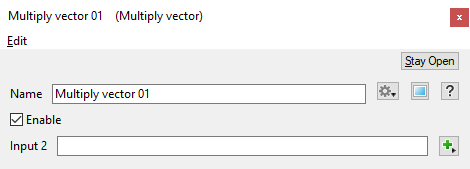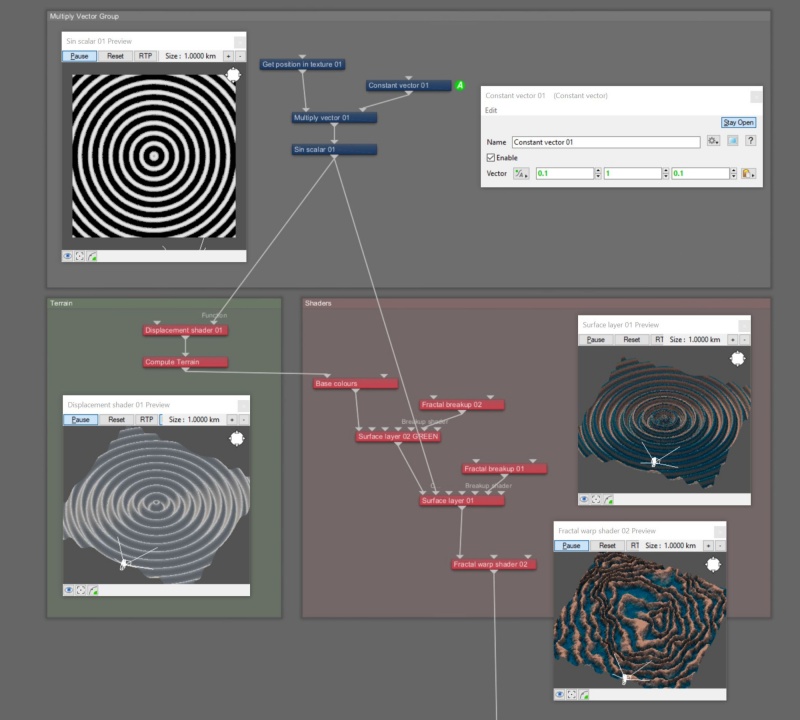Multiply Vector
Overview[edit]
The Multiply family of nodes allow you to multiply the colour/scalar/vector coming into the Input by the color/scalar/vector coming into Input 2. The multiplication is component-wise, for example with a colour :
- Input.red multiplied by Input 2.red
- Input.green multiplied by Input 2.green
- Input.blue multiplied by Input 2.blue
A natural use of the Multiply Vector node would be to provide a way to scale a feature when a scale-type parameter is not available. For example, the Sin Scalar node has only a Main Input. In the example below, by inserting a Multiply Vector node between it and the Get Position in Texture node, the scale of the Sin can be adjusted.
Settings:
- Name: This setting allows you to apply a descriptive name to the node, which can be helpful when using multiple Multiply Vector nodes in a project.
- Enable: When checked, the node is active and the multiplication operation will take place. When unchecked the values assigned to its Main Input, if any, are passed through, otherwise a value of 0 is passed through.
- Input 2: The component values from the shader or function nodes assigned to this setting are multiplied with those from the Main Input. When nothing is assigned, the Main Input values, if any, are passed through. If the Main Input is unassigned, the output from the node is 0.
A scalar is a single number. 1, 200.45, -45, -0.2 are all examples of scalar values.
A vector is a set of three scalars, normally representing X, Y and Z coordinates. It also commonly represents rotation, where the values are pitch, heading and bank.
A parameter is an individual setting in a node parameter view which controls some aspect of the node.
A single object or device in the node network which generates or modifies data and may accept input data or create output data or both, depending on its function. Nodes usually have their own settings which control the data they create or how they modify data passing through them. Nodes are connected together in a network to perform work in a network-based user interface. In Terragen 2 nodes are connected together to describe a scene.
A shader is a program or set of instructions used in 3D computer graphics to determine the final surface properties of an object or image. This can include arbitrarily complex descriptions of light absorption and diffusion, texture mapping, reflection and refraction, shadowing, surface displacement and post-processing effects. In Terragen 2 shaders are used to construct and modify almost every element of a scene.



